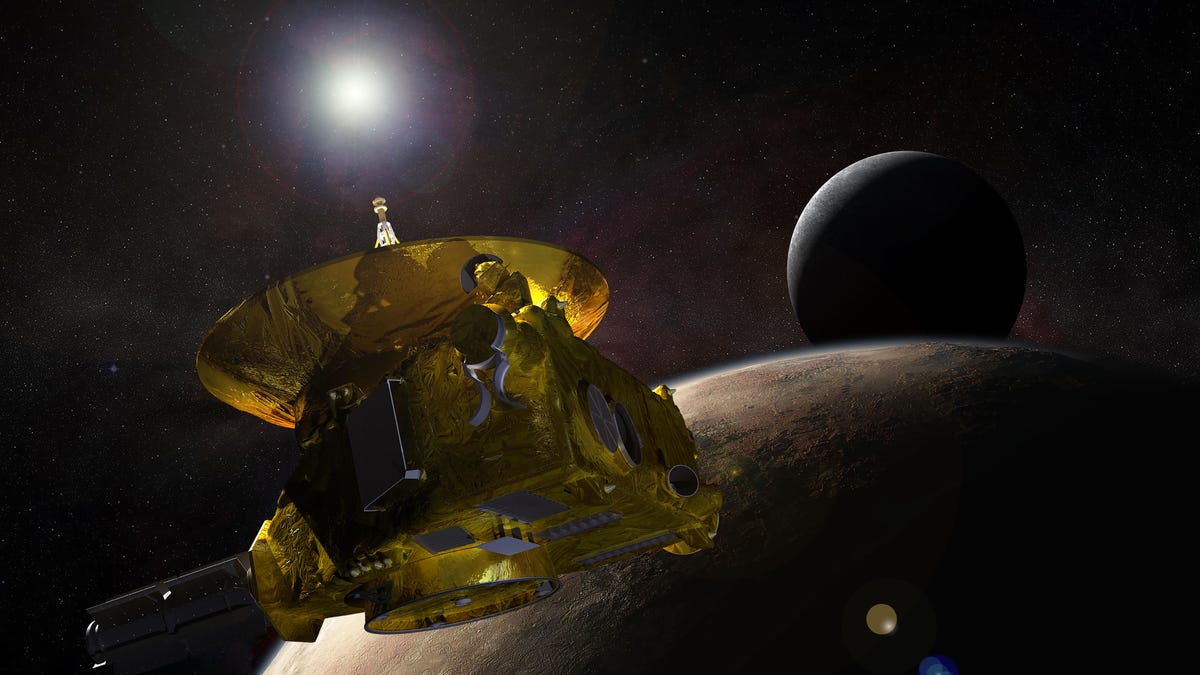NASA's New Horizons probes 'alien sky' at the edge of the solar system
The spacecraft examined the cosmos from well beyond Pluto, revealing a different view of the stars than we're used to seeing on Earth.

An artist's render of the New Horizons spacecraft.
NASA's New Horizons spacecraft has quite the resume. It departed for Pluto in 2005 and, a decade later, imaged the dwarf planet in all its heart-shaped glory. Then it continued on its journey past a bizarre, bi-lobed world known as "Arrokoth" last year. As it blazes its way to the edge of the solar system, NASA scientists have turned its cameras to the sky, showing some of the closest stars to Earth look a little different to the spacecraft.
"It's fair to say that New Horizons is looking at an alien sky, unlike what we see from Earth," said Alan Stern, principal investigator on the project, in a NASA release Wednesday.
In April, the New Horizons team pointed the spacecraft's cameras at two stars: Proxima Centauri and Wolf 359. At around 4.2 light-years from the sun, Proxima Centauri is the closest star to our solar system, while Wolf 359 lies about 7.9 light-years away. At the time, the spacecraft was around 4.3 billion miles (around 7 billion kilometers) from Earth. Because of the vast distance between the intrepid robotic explorer and home, it was able to perform the very first interstellar "parallax" experiment.
Parallax is a term used to describe how objects appear to have moved when viewed from different angles. NASA gives a great example: Hold your finger out in front of your face and close one eye. Then switch -- open the other eye and close the open eye. Because the viewing angle has slightly changed, the background behind your finger has also slightly changed and it appears to be in a different position.
Scientists can use this quirk of observation to determine where stars lie in space. If you take an image of Proxima Centauri from Earth in December, then take another image in June, you can use the angle to estimate how far away the stars are placed.
Proxima Centauri seen against the background of space from the New Horizons probe and from Earth.
But you could also cut down on that huge waiting period and take images at the same time if you have a camera far enough away from the Earth. That's where New Horizons comes in. New Horizons captured images of Proxima Centauri and Wolf 359 on April 22 and 23. At the same time, telescopes on Earth were taking their own images of the two stars. Viewing the images side by side, you can see the stars in different positions. They haven't moved -- but our viewing angle has.
"The New Horizons experiment provides the largest parallax baseline ever made ... and is the first demonstration of an easily observable stellar parallax," said Tod Lauer, a member of the New Horizons team who coordinated the experiment.
Queen guitarist Brian May, a noted astrophysicist and imaging buff who helped create the images, was equally chuffed.
"The latest New Horizons stereoscopic experiment breaks all records. These photographs of Proxima Centauri and Wolf 359 – stars that are well-known to amateur astronomers and science fiction aficionados alike -- employ the largest distance between viewpoints ever achieved in 180 years of stereoscopy!" he said.

